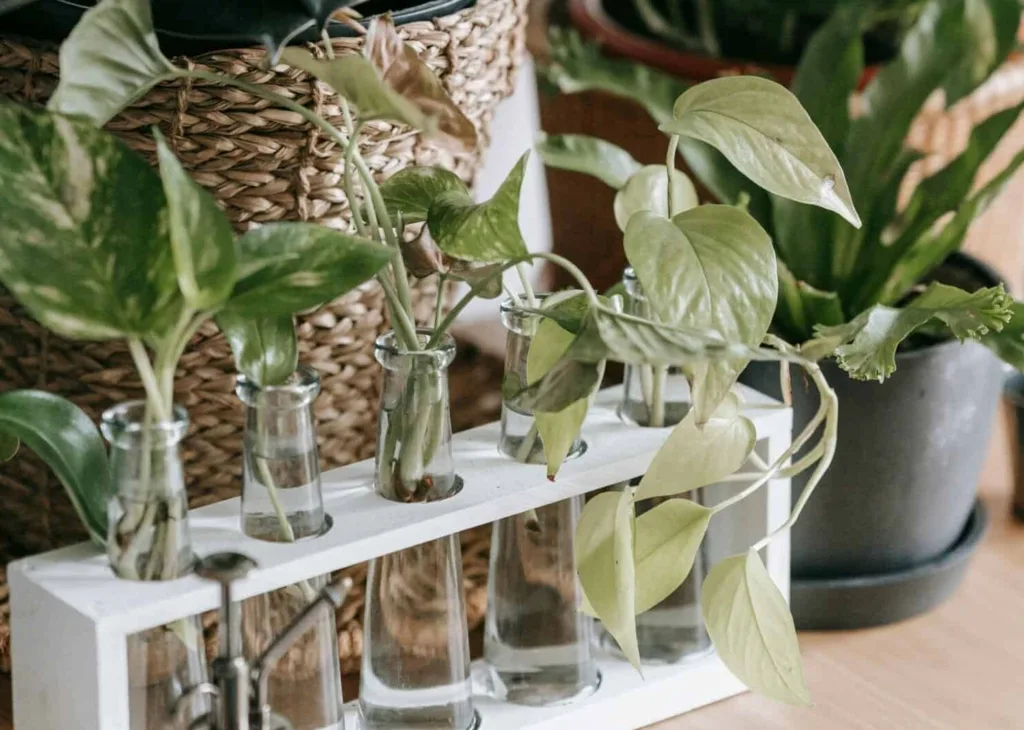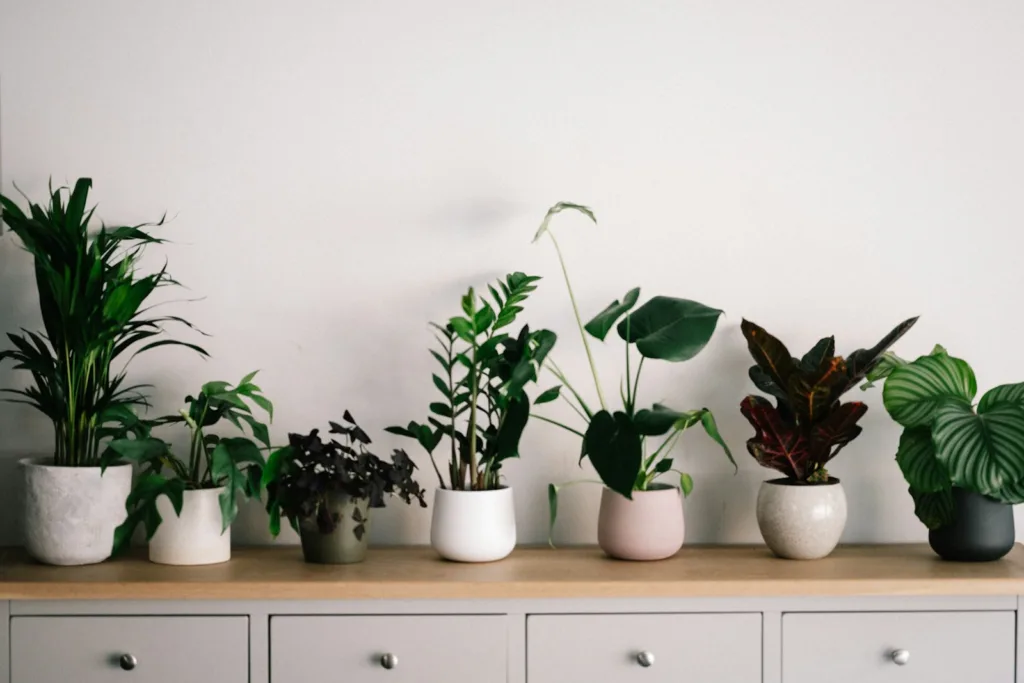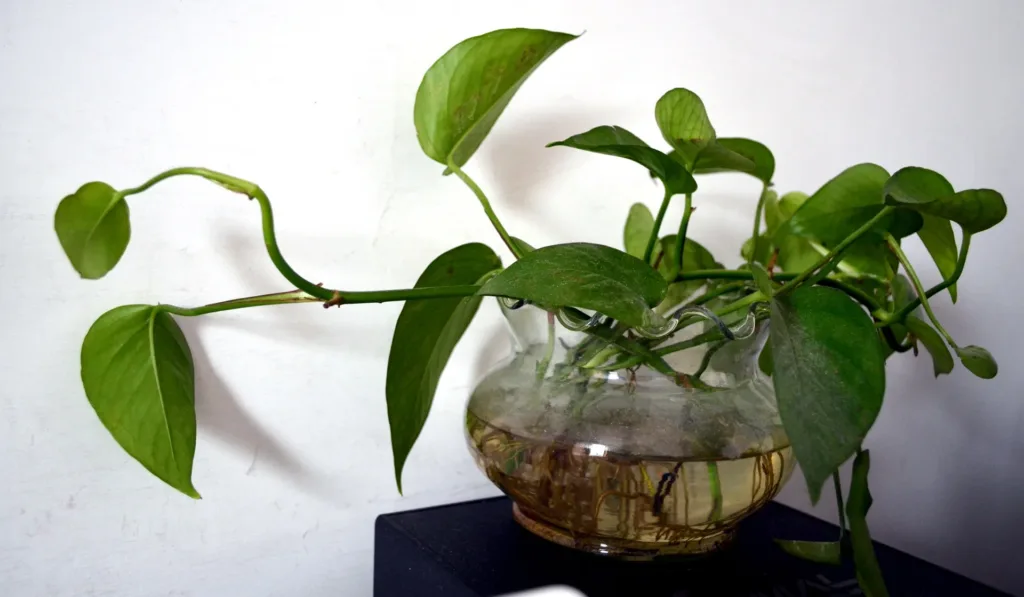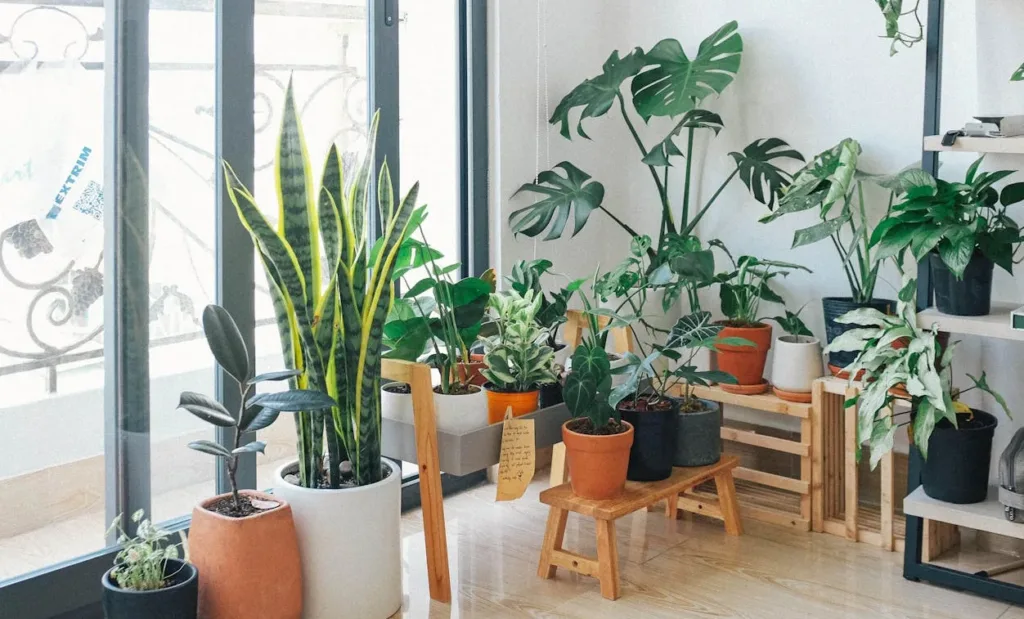The spider plant (Chlorophytum comosum) is one of the easiest and most beautiful houseplants to care for . Also it is a favorite plant among beginners and experienced gardeners alike. Known for its cascading green and white-striped leaves and air-purifying qualities, this plant thrives in a variety of conditions.
In this guide, you’ll learn everything about spider plant care, including water and light requirements, fertilization tips, pruning, repotting, and how to keep your plant healthy year-round. By the end, you’ll be equipped with all the knowledge to help your spider plant flourish.
Table of Contents
Understanding Spider Plants
Spider plants are native to tropical and southern Africa, where they grow in partial shade with consistent moisture. These hardy plants are well-suited to indoor environments due to their adaptability and low maintenance requirements. They also produce “spiderettes” or baby plants, which are perfect for propagation and make your plant collection grow effortlessly.

Right soil mix
Spider plants need well-draining, nutrient-rich soil to grow well. A good mix includes 60% organic potting soil, 30% perlite for aeration and drainage, and 10% compost or coconut coir to boost nutrients and retain moisture. Avoid using heavy garden soil or clay-based mixes, as these can compact and lead to root rot.

For convenience, you can use a pre-made houseplant potting mix, ensuring it contains perlite or vermiculite. Always use fresh soil during repotting to replenish nutrients and promote healthy root growth. A well-balanced soil mix will keep your spider plant lush and vibrant year-round!
Watering Requirements
Spider plants thrive on consistent watering but can tolerate occasional neglect. The key is striking a balance. Overwatering can lead to root rot, while underwatering might cause the leaves to brown at the tips. Water your spider plant once the top inch of soil feels dry to the touch. During the growing season (spring and summer), increase watering slightly, but let the plant dry out between waterings in winter.
Using filtered or distilled water is ideal, as spider plants are sensitive to chemicals like fluoride and chlorine found in tap water. Brown tips on leaves are often a sign of water quality issues.
Light Needs
Spider plants prefer bright, indirect light but can adapt to low-light conditions. Placing them near an east or west-facing window is perfect. Too much direct sunlight can scorch the leaves, so avoid placing them in direct sun for extended periods. If the leaves lose their vibrant color, it may be a sign your plant isn’t getting enough light.

Artificial grow lights can also work if natural light is limited, especially in darker rooms or during winter months.
Fertilizing Tips
Fertilize spider plants every 4–6 weeks during the growing season using a balanced, water-soluble fertilizer. Dilute the fertilizer to half strength to prevent overfeeding, which can harm the plant. Avoid fertilizing in the fall and winter when the plant’s growth slows down.
Organic fertilizers like compost tea or diluted liquid seaweed are great options for hobbyists looking for eco-friendly alternatives.
Pruning and Maintenance
Pruning helps to maintain your spider plant’s shape and encourages healthy growth. Trim off any yellow or brown leaves with clean scissors. Removing older spiderettes can also improve the plant’s overall appearance and health.

Check the plant regularly for pests like spider mites or aphids, which can occasionally appear. Wiping the leaves with a damp cloth or spraying with insecticidal soap can keep infestations under control.
Repotting Spider Plants
Spider plants grow quickly and may become root-bound in their pots. Repotting every 1–2 years is recommended. Look for signs like roots poking out of the drainage holes or slow growth.
Choose a pot that’s 1–2 inches larger in diameter than the current one, and use well-draining potting soil. Gently loosen the roots before placing the plant in its new pot to encourage healthy growth.
Pest Control
Although spider plants are generally resilient, they can occasionally be affected by pests such as spider mites, aphids, or mealybugs. Regularly inspecting your plant is key to catching infestations early. If you notice small webs, sticky residue, or discolored patches on the leaves, your plant may be under attack.

To address pests, start by isolating the affected plant to prevent the pests from spreading. Use a damp cloth to gently wipe the leaves, removing visible pests. For more persistent infestations, spray the plant with a diluted insecticidal soap or neem oil solution. Avoid using harsh chemical pesticides, as they may damage the plant or harm indoor air quality.
Maintaining proper air circulation around the plant and avoiding overwatering can also reduce the likelihood of pests.
Temperature and Humidity Requirements
Spider plants thrive in average indoor temperatures ranging from 65°F to 75°F (18°C to 24°C). They can tolerate slightly cooler temperatures, but prolonged exposure to temperatures below 50°F (10°C) may cause damage. Avoid placing your spider plant near drafts, heating vents, or air conditioners, as sudden temperature fluctuations can stress the plant.

In terms of humidity, spider plants are quite adaptable but prefer moderate levels. If your indoor environment is very dry, especially during winter, consider increasing humidity by misting the plant occasionally or placing it near a humidifier. Grouping plants together can also create a microclimate with higher humidity.
Seasonal Care Tips
Spider plants have different needs during various times of the year, and adjusting your care routine accordingly can help them thrive.
Spring and Summer:
This is the plant’s active growing season. Increase watering frequency as the soil tends to dry out faster in warmer weather. Fertilize every 4–6 weeks with a balanced fertilizer to support growth. Place the plant in bright, indirect light and monitor for rapid growth or the production of spiderettes, which is common during this period.
Fall:
As temperatures drop, reduce the frequency of watering since the plant’s growth rate slows. Continue providing sufficient indirect light and clean the leaves occasionally to remove dust that may accumulate.
Winter:
Growth is minimal during winter, so water sparingly, allowing the soil to dry out more between waterings. Avoid fertilizing during this time, as the plant isn’t actively growing. Ensure the plant is not exposed to cold drafts or temperatures below 50°F (10°C). If the indoor environment becomes dry due to heating, mist the leaves occasionally to maintain adequate humidity.
Propagating Spider Plants
One of the most rewarding aspects of spider plants is how easy they are to propagate. They naturally produce baby plants, or “spiderettes,” that can be grown into full-sized plants.

Here’s how you can propagate them:
- Using Spiderettes (Offsets):
- Wait until the spiderettes have small roots visible at their base.
- Snip the baby plant from the main plant with clean scissors.
- Plant the spiderette directly into a small pot filled with well-draining soil, water lightly, and place it in bright, indirect light.
- Water Propagation:
- Alternatively, place the spiderette in a glass of water with the roots submerged.
- Change the water every few days to prevent stagnation.
- Once the roots are around 1–2 inches long, transfer the baby plant to a pot with soil.
- Division Method:
- For mature spider plants with crowded roots, propagation through division is an option. Carefully remove the plant from its pot and separate it into smaller sections, ensuring each section has a healthy root system. Repot each section individually in fresh soil.
Propagation is not only a fun activity for hobbyists but also a great way to expand your plant collection or share plants with friends.
Common Problems and How to Fix Them
Brown Leaf Tips: Often caused by fluoride in tap water or inconsistent watering. Use filtered water and maintain a steady watering schedule.
Yellow Leaves: Can be a sign of overwatering. Let the soil dry out between waterings and ensure proper drainage.
Lack of Growth: Could be due to low light or insufficient nutrients. Relocate the plant to a brighter spot and consider fertilizing during the growing season.
FAQs
Why are the tips of my spider plant turning brown?
Brown tips are often caused by fluoride or chlorine in tap water, overwatering, or low humidity. Use filtered or distilled water and ensure the soil isn’t waterlogged.
How often should I water my spider plant?
Water your spider plant when the top inch of soil feels dry. In the growing season, water more frequently, and reduce watering in winter.
Can spider plants survive in low light?
Yes, spider plants can tolerate low light but thrive best in bright, indirect sunlight. Insufficient light may cause slower growth or pale leaves.
Are spider plants safe for pets?
Yes, spider plants are non-toxic to cats and dogs, but they might nibble on the leaves. Excessive consumption can cause mild digestive upset.
Do spider plants need fertilizer?
Fertilize spider plants every 4–6 weeks during the growing season with a diluted, balanced fertilizer. Avoid fertilizing in fall and winter.
Can I grow spider plant in water ?
Yes, spider plants can grow in water! You can place the plant’s roots or spiderettes (baby plants) in a container with water,Change the water every few days to prevent stagnation and root rot. However, for long-term growth, it’s best to transfer them to soil,










